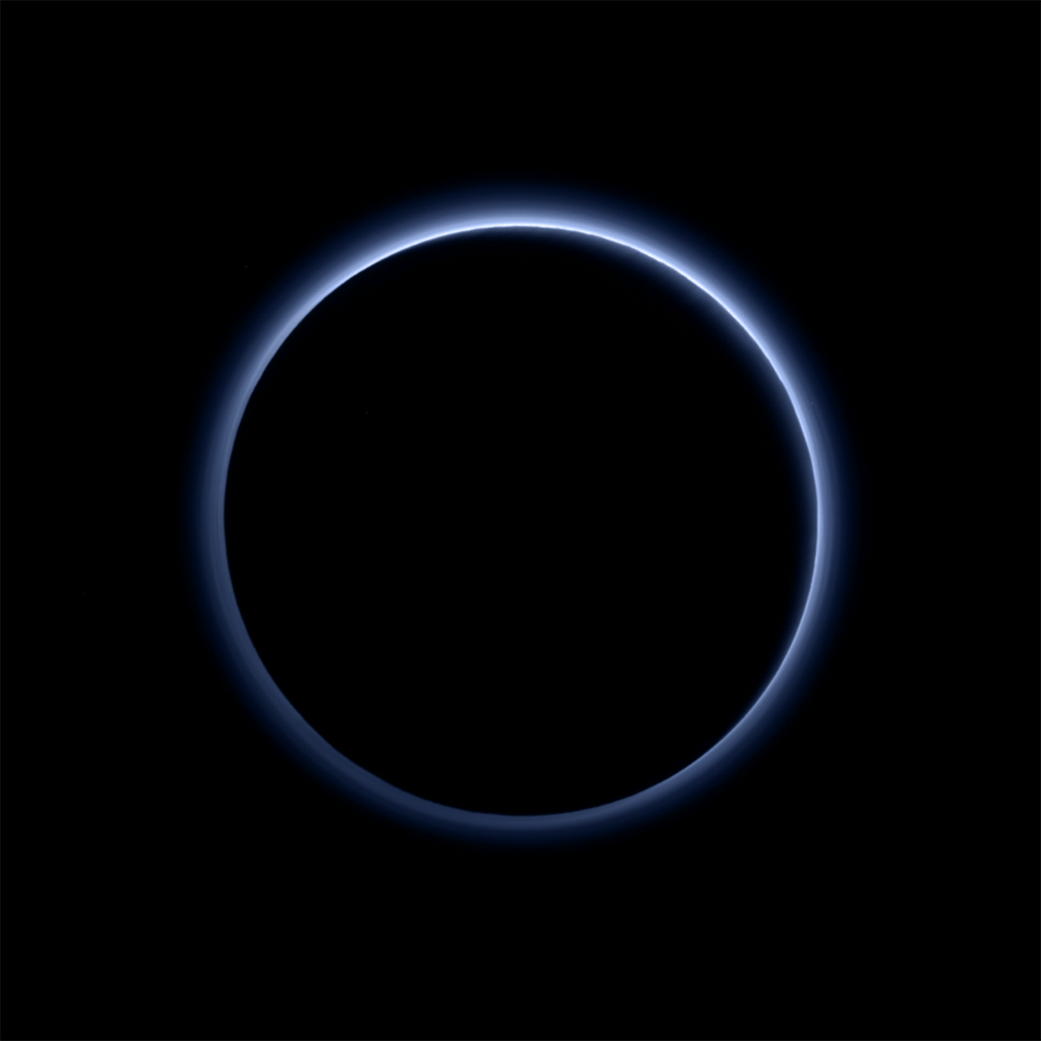When NASA’s New Horizons spacecraft flew past Pluto, studying the atmosphere was a key scientific objective. Most of what we know about the ice dwarf came from that flyby. That happened in July 2015, but it took over 15 months to send all the data home, and it’s taking even longer to analyze it.
But a team of researchers realized what a unique opportunity there was to combine New Horizons observations of Pluto’s atmosphere with other observations at the same time. Those combined observations have given us our most complete understanding of the atmosphere.
About two weeks prior to the New Horizons fly-by of Pluto, astronomers had an opportunity. Pluto was going to pass between Earth and a distant star, and that occultation was a chance to study Pluto’s atmosphere as it was lit up by starlight. Unfortunately, that occultation would only last about two minutes, and would occur over the Pacific Ocean, near New Zealand.
Luckily, we have SOFIA.
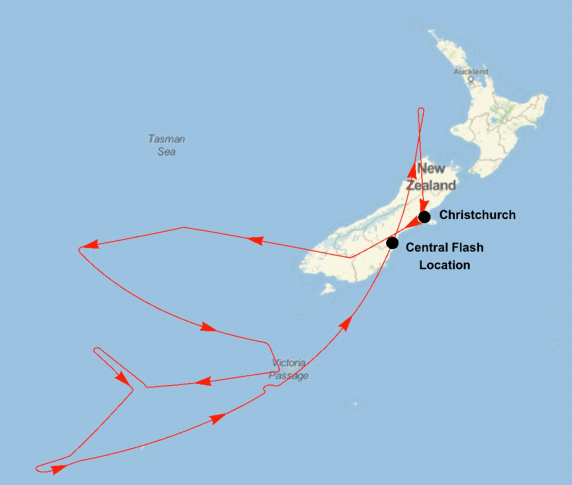
along the mostly smooth curve. The “wiggle” in the flight path just below the label “Victoria Passage” was inserted in order to ensure that SOFIA arrived at the center
of the occultation path (indicated by the black dot) at the predicted midtime of the event. Image Credit: Person et al, 2020.
The SOFIA Observatory is a highly-modified Boeing 747SP with a 2.5 meter (100 inch) telescope that can see in the infrared. It’s a joint mission between NASA and the DLR, or German Aerospace Center. SOFIA flies at high altitude, above most of the atmosphere that messes with observations. The occultation of Pluto cast a small, rapidly-moving shadow over the Pacific Ocean, and SOFIA was able to travel to that occultation and observe Pluto’s distant atmosphere.
A new study is outlining the results of all these observations. It’s titled “Haze in Pluto’s atmosphere: Results from SOFIA and ground-based observations of the 2015 June 29 Pluto occultation.” The lead author is Michael Person of MIT’s Wallace Astrophysical Observatory. The paper is published in the journal Icarus.
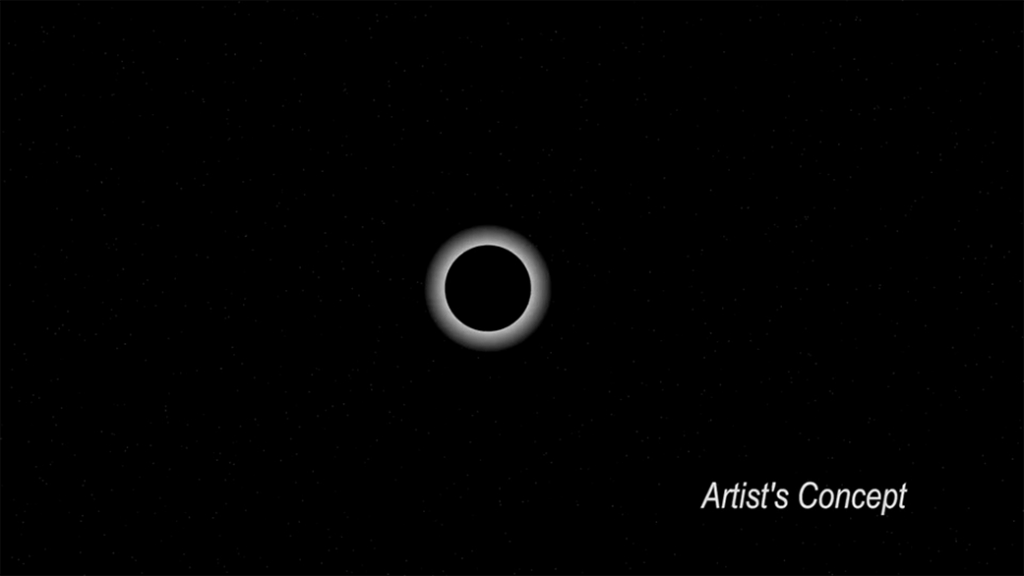
“Pluto is a mysterious object that is constantly surprising us,” Person said in a press release.”There had been hints in earlier remote observations that there might be haze, but there wasn’t strong evidence to confirm it really existed until the data came from SOFIA. Now we’re questioning if Pluto’s atmosphere is going to collapse in the coming years – it may be more resilient than we thought.”
Scientists are interested in Pluto’s dynamic atmosphere. Pluto takes about 247 years to complete one of its elliptical orbits around the Sun. It’s orbit is inclined at about 17 degrees, and it rotates on its side, with its axis tilted to about 120 degrees. Pluto’s orbit also takes it closer to the Sun than Neptune at times.

This all adds up to a very interesting atmosphere, where the solar insolation Pluto receives can produce strong seasonal changes in its atmosphere. As the solar insolation decreases, it could lead to a collapse of the atmosphere. Pluto’s atmosphere is only loosely bound to the dwarf planet, and replenished by the Sun’s energy melting volatile ices. Remove enough energy, and the atmosphere could disappear.
The occultation of Pluto in 2015 meant that SOFIA could observe Pluto’s atomsphere in infrared and visible light, while only two weeks later—which isn’t much for a body with an almost 250 year orbit—New Horizons could study the atmosphere in radio and ultraviolet. Also, while SOFIA looked at the middle layers of the atmosphere, New Horizons probed the upper and lower layers.
Prior to the SOFIA flight into the occultation, lead author Michael Person said, “We should be able to get a pressure and temperature profile for Pluto’s atmosphere, which is particularly interesting right now because we can directly compare it to the one derived from New Horizons, and that will let us calibrate all the observations we’ve been making for 20 years.”
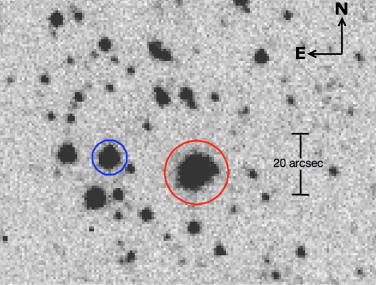
These combined observations have opened up a new understanding of Pluto’s atmosphere.
Pluto’s atmosphere is mostly nitrogen, with some methane and carbon monoxide. They exist in equilibrium with their corresponding ices on the surface. The planet has a hazy blue atmosphere, where haze particles form in the upper atmosphere, at about 32 km (20 miles) above the surface. The haze particles look blue because of their tiny size. They’re only 0.06-0.10 microns thick, or about 1,000 times smaller than the width of a human hair. Methane and other gases react to sunlight up there, and rain down on the surface.
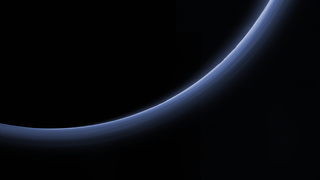
Scientists have wondered about the fate of Pluto’s atmosphere when it’s a great distance from the Sun. Atmospheric particles can be stripped away by the solar wind, and without enough solar insolation, those particles would not be replenished by the melting of volatiles on the surface. This is the atmospheric collapse that researchers have wondered about.
But this new study suggests that there is no danger of atmospheric of collapse. Instead, the atmosphere goes through a cycle of loss and replenishment that lasts a few years, separate from its 247 year orbit.
This tells researchers that the tiny particles in the atmosphere are created quickly. The team behind this study says that changes in Pluto’s orbit are responsible for this cycle, not just its distance from the Sun.
Due to Pluto’s strange orbit, some surface areas receive more solar insolation than others at different times. When regions rich in volatile ices are exposed to more Sun, the atmosphere may expand more quickly, producing more haze particles. The reverse is also true. Even as Pluto becomes more distant from the Sun, this shrinking-expanding cycle has continued. But there’s no indication if this cycle will continue.
“There’s still a lot we don’t understand, but we’re forced now to reconsider earlier predictions,” said Person. “Pluto’s atmosphere may collapse more slowly than previously predicted, or perhaps not at all. We have to keep monitoring it to find out.”
It took a lot of effort on the part of SOFIA to get these observations. The occultation gave SOFIA a rare chance to study Pluto’s atmosphere while distant starlight passed through it. But calculating the exact when and where of the occultation wasn’t easy.
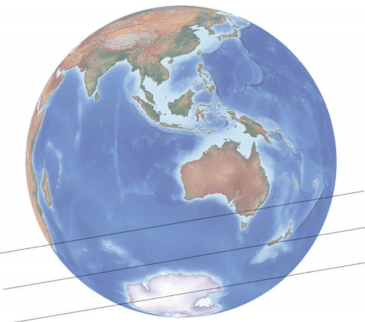
The calculated projection of the shadow on the Earth. Depending on how the calculations were done, and depending on different ways of modelling it, the best observation of the occultation would occur in this region. Image Credit: Person et al, 2020.
“We have a very finite amount of time to catch the shadow as it streaks across the Earth,” said one SOFIA crew member prior to takeoff.
The shadow moved very quickly—85,000 km/h (53,000 mp/h)—and would only last about two minutes. That means that SOFIA had to be in the right place at the right time. SOFIA navigators plotted their course, but only a brief two hours before occultation, new calculations and an updated prediction moved the occultation 320 km (200 mi) to the north.
“We reached Pluto’s shadow at exactly the right time and were very happy to have made it!”
William Reach, SOFIA Associate Director for Science Operations.
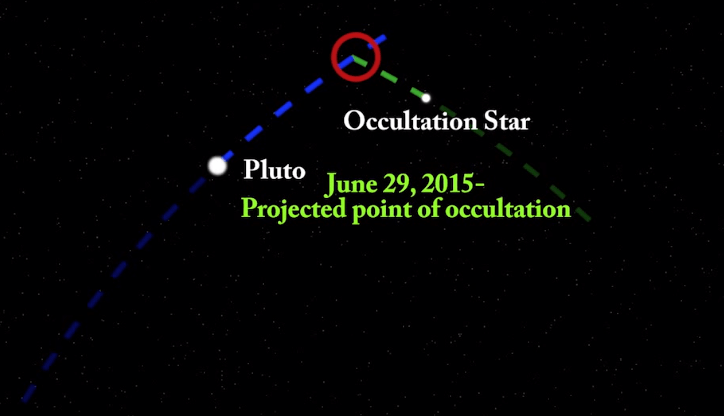
Since it’s an airplane, SOFIA was able to change course. But that requires filing an updated flight plan and other actions.
“Capturing that shadow required a bit of scramble. SOFIA has the benefit of being mobile, but the revised flight plan had to be cleared by air traffic control,” said William Reach, SOFIA’s associate director for science operations. “There were a few tense moments, but the team worked together, and we got clearance. We reached Pluto’s shadow at exactly the right time and were very happy to have made it!”
There’s only been one mission to Pluto, the New Horizons mission. There’s talk of another mission, and possibly putting a spacecraft in orbit around the icy dwarf for a prolonged study. Alan Stern, the principal investigator for New Horizons, has proposed a future orbiter mission to Pluto based on Direct Fusion Drive. NASA’s NIAC (NASA’s Institute for Advance Concepts) has funded studies into the technology, but so far it’s still mostly conceptual.
For now, there’s broad agreement between SOFIA, ground observations, and the data generated by New Horizons’ fly-by of Pluto. That gives researchers confidence in the New Horizons data, which is all they’ll have to work with for quite some time.

